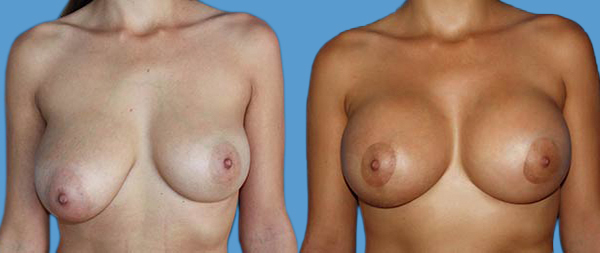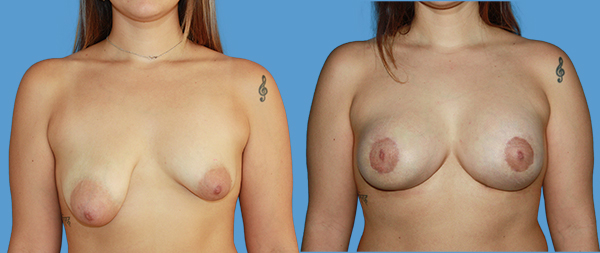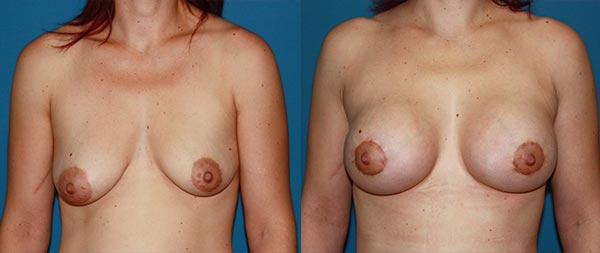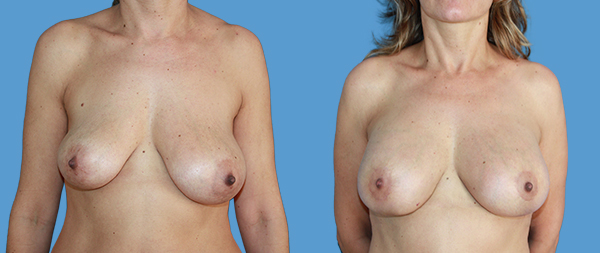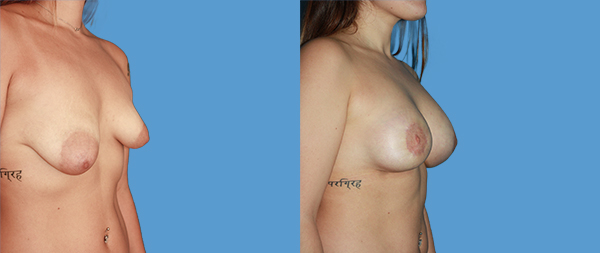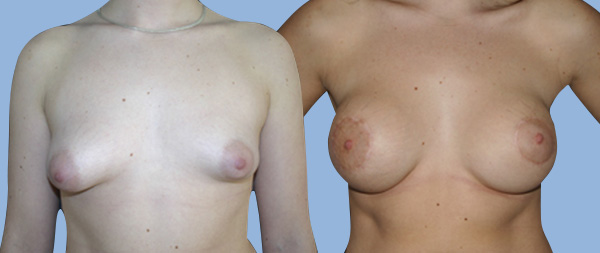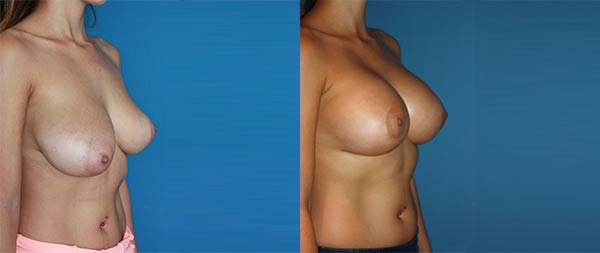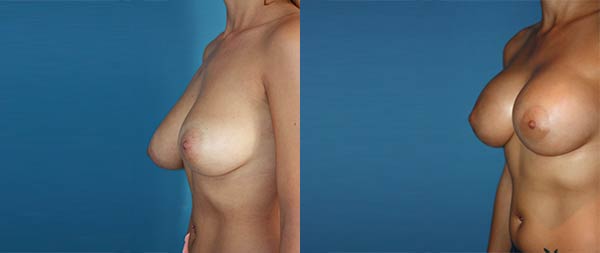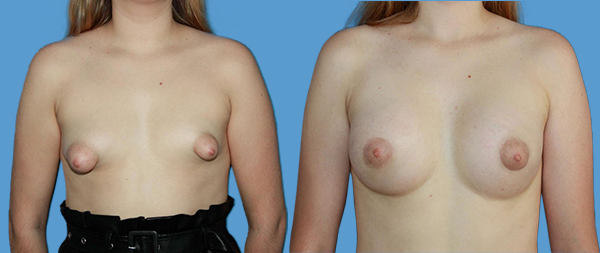Breast asymmetry
If there is a difference in the size or shape between two breasts, and the patient wishes to correct it

WHAT IS BREAST ASYMMETRY?
For us, “asymmetric breasts” are breasts that have developed in an anomalous and unequal manner that affects both the shape and the size of the breast. The result is breasts that are very different both in terms of shape and volume, producing upheaval in the social and personal life of the patient.
While a degree of slight asymmetry is normal in some breasts and common in many women, when this asymmetry becomes striking it may produce an emotional impact or influence the life of the patient, in particular during their adolescence and youth.
WHY DOES THIS ASYMMETRY BREAST OCCUR?
There are many causes that generate a difference in size or shape from one breast to the other.
These causes can be hormonal or known syndromes.
Syndromes that cause breast asymmetry include Poland syndrome, which consists of underdevelopment of chest muscles and bones on one side of the body.
Another very characteristic condition results in asymmetrical breasts is tubular breasts, which have a narrow base, are widely separated and have very wide areolas, and have no gland at the bottom.
EXCELLENT RESULTS AT ANY AGE
It is an operation that produces excellent results, and which can be performed at any age after puberty. It produces magnificent results both on an aesthetic level (symmetrical, beautiful and natural breasts) and on an emotional level.
SOLUTION TO BREAST ASYMMETRY: PERSONALISED TREATMENT
Depending on each case, the solution may consist of increasing or reducing the size of one breast so that it is the same shape and size as the other. The most common course of action is a combination of both techniques, i.e. one breast is enlarged using a prosthesis, while the other breast is reduced or lifted.
Also used is the lipofilling technique, which consists of a transplant of fat from the patient to reduce the asymmetry in the breasts , since the fat can be added with great precision. This technique is used in small asymmetries.
REAL-LIFE CASES - DR. PEREZ DE LA ROMANA
BEFORE-AND-AFTER PHOTOGRAPHS OF REAL-LIFE CASES OF BREAST ASYMMETRY
Click on the buttons to see the before-and-after comparison
SEE MORE REAL-LIFE CASES OF BREAST ASYMMETRY
FAQS
Why does breast asymmetry occur?
In reality, it is a defect in the development of the breast and is detected when the patient has reached puberty, when it is clear that the volume of one breast is different from that of the other. It can also occur after a breast excision, after a tumor and on other occasions in surgeries that have been performed incorrectly, e.g. in breast augmentations in which one prosthesis is larger than the other.
How long does this procedure normally take?
It normally takes from two to three hours, depending on the degree of asymmetry of the breast. Prostheses of different sizes almost always have to be put in place, and sometimes one breast has to be reduced or lifted up, in case if the other one is higher or sags.
Can asymmetries also be corrected with fat?
Yes, in many cases the correction can be performed simply with fat, while in other cases it is used to help the placed prostheses to correct better the asymmetry of the breasts.
When can I start working?
Normally after one or two weeks, depending on the type of work and the procedure performed.
When will I be able to go to the beach or the pool?
Normally two weeks after the procedure, once the incisions have fully healed.
When can I start playing sports?
It is usually recommended that patients start exercising one month after the procedure.
Should silicone prostheses be replaced?
Usually, the prostheses we put in place are of higher quality than those that exist in the market and should never be changed. However, it is possible that over time prosthetics can wear away and have to be changed, albeit only in cases when prostheses are broken. This happens in very few cases.
Can I get pregnant and breastfeed?
Yes, patients who wear prostheses can become pregnant and can breastfeed without any problems.
From what age can I have this procedure?
Normally after the age of 18 or when your breasts have completed their development, in order to fully observe the asymmetry once the breast is developed.


